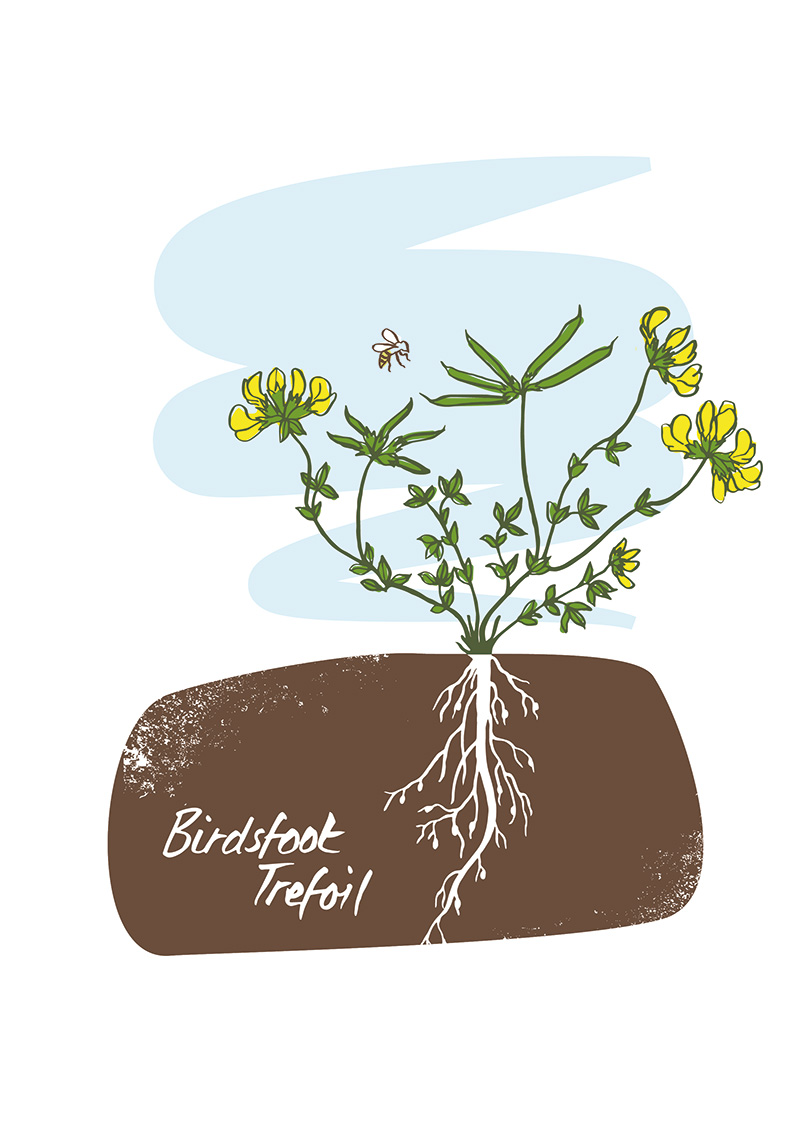

Birdsfoot trefoil (lotus corniculatus) is a medium term, winter hardy, perennial legume. Lasting from 2 - 4 years. In some parts of the country it is known as the 'eggs and bacon' plant.
Birdsfoot trefoil, like sainfoin, contains tannins. It is a bioactive forage legume which can improve protein utilisation in ruminant livestock. These legumes can also combat parasitic nematodes, fix nitrogen, cut down methane emissions and are rich in protein.
It is very drought resistant, staying green when many other species struggle in dry conditions.
When to Sow: Sow in spring or autumn. Soils must be warm, at least 7 degrees celsius and on the rise.
Sowing Rate: 1.25 g/m2 - 5kgs per acre - 12.5kgs per ha.
Preparation:The most successful results come from sowing into a newly prepared seedbed. Aim to cultivate the top soil to about 5cm, with a light cultivator or discs. The finished seedbed should be fine but firm, with no clods. Several passes with a cultivator may be needed to achieve this.
Sowing: Birdsfoot trefoil is one of the smallest legume seeds and should be broadcast or drilled to a shallow depth (no more than 10mm). Sowing too deep will reduce the germination dramatically. The soil should be rolled after sowing to increase seed to soil contact.
Birdsfoot trefoil is often combined in a herbal ley, a very diverse mixture which includes grasses, forage herbs and legumes. The anthelmintic and bioactive properties (condensed tannins) of the plant make a useful contribution to improving livestock health by reducing bloat, worms and processing protein more efficiently. It is also used with less aggressive species like Timothy, smooth stalked meadow grass and tall or meadow fescue in more traditional grassland mixtures.
Management: Severe defoliation will reduce the persistence of the plant. Also when used in a mixture with grass species, allowing the grass to become tall and block out sunlight will have an adverse effect on birdsfoot trefoil. To terminate birdsfoot trefoil you will need to plough the area to remove the plant from the root.
Date Posted: 13th January 2023



